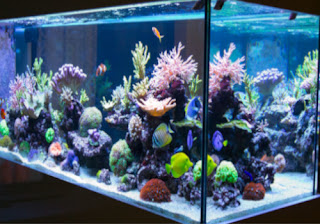What is Brown Jelly Disease? Causes and Treatment

Do you have brown jelly disease corals in your saltwater aquarium? Healthy coral colonies are olive green, brown, tan, and pale yellow in color. Unfortunately, a new brown jelly disease kills off these colonies.
If you’re a coral hobbyist, you know that the environment is something you need to take into account when sustaining your reef.
Unfortunately, many corals are susceptible to various diseases, and one of the most common is a brown jelly disease. In this post, we’ll discuss brown jelly disease, how it affects corals, and ways to prevent its spread.
In closing
- What is Brown Jelly Disease
- What Causes Brown Jelly Disease
- Brown Jelly Disease Symptoms
- What does Brown Jelly Disease Look like
- How to treat Brown Jelly Disease
- How to Prevent Brown Jelly Disease
What is Brown Jelly Disease?

Brown jelly disease (BJD) is a coral disease caused by protozoa (possibly Helicostoma nonatum) and cyanobacteria. It can be deadly to coral, and it is essential to protect your coral colonies from this disease.
If you’re worried about the health of your coral reef, you’re not alone. Coral reefs are in trouble, and a major reason is a coral jelly disease. A coral jelly disease is a form of coral disease caused by a parasite. It can kill coral reefs quickly, and it’s something that we need to be on the lookout for. This article will tell you everything you need to know about the coral jelly disease and how to prevent it from affecting your reef.
What Causes Brown Jelly Disease
This disease shows itself as a brown, jelly-like material on the coral’s surface. Brown jelly disease (BJD) is a coral disease caused by protozoa (possibly Helicostoma notatum) and cyanobacteria. It is a severe disease that can cause extensive damage to coral reefs.
Brown Jelly Disease Symptoms
The following are the most common brown jelly disease symptoms-
- A brown or black jellylike substance on the surface of the coral.
- Reduced growth or lesions on the polyps.
- Mild to severe discoloration of the reef around the affected coral
- Changes in the odor
What does Brown Jelly Disease Look like
In general, brown jelly disease coral appears as a cloudy, yellow-brown mass on the coral’s skin. The lesions may also extend into the tissue below the coral’s epidermis. There is a slightly sweet smell to brown jelly disease coral, and it can cause a decrease in the coral’s color.
How to treat Brown Jelly Disease
1. Iodine Solution
To Treat Brown Jelly Disease Coral with Iodine:
- Fill a large container with water and add 1 cup of iodine.
- Add the infected coral to the water and stir it around so that the coral is fully submerged.
- Leave the coral in the treated water for up to 24 hours, or until all signs of the disease have disappeared.
- Rinse the coral thoroughly with fresh water, and allow it to dry before displaying it in your aquarium or ocean tank.
2. Hydrogen Peroxide
- First, add the affected corals to a water container and wash the corals thoroughly to get rid of as much jelly as possible. Remove the toxic water and repeat as necessary to remove as much brown jelly as possible.
- Place the contaminated corals in a container with a solution of one part hydrogen peroxide (3%) to 10 parts tank water (about 10mL hydrogen peroxide in 200ml tank water).
- Bubbles should start to appear on the coral’s heads. Leave the coral in the treated water for 5 minutes.
- After 5 minutes, dump the hydrogen peroxide solution and replace the coral in a fresh tank water container.
How to Prevent Brown Jelly Disease
There are a few things that you can do to protect your coral colonies from BJD:
1. Keep your water clean
Make sure to keep your water clean and free of pollutants. This will help to prevent the spread of BJD and other diseases.
2. Avoid Overwatering your Coral
Over-watering can cause your coral to become stressed, leading to BJD. Try to limit water changes to once a week or every two weeks.
3. Quarantine new Arrivals
If you are bringing in new corals, make sure to quarantine them for at least two weeks before adding them to your colony. Quarantine means keeping them isolated from other corals to prevent the spread of disease.
4. Use a Quality water filter
Some water filters are designed to keep reef tanks healthy and free of algae and other harmful algae populations. A quality water filter will also remove viruses and other harmful bacteria from your water.
Brown jelly disease (BJD) is a coral disease that causes lesions and yellowing of the coral tissue. It is caused by the bacterium Serratia marcescens and can be treated with iodine. Iodine will help kill the bacterium and help clean the coral of any debris that may be causing the disease.
In Closing
We have discussed brown jelly disease and how to prevent it from spreading to your coral in the aquarium. By following the tips provided, you can keep your coral safe from this dreaded disease.
References
- Coral Epidemiology
- Identification of a Ciliate (Oligohymenophorea: Scuticociliatia) Associated with Brown Band Disease on Corals
- What is coral disease





